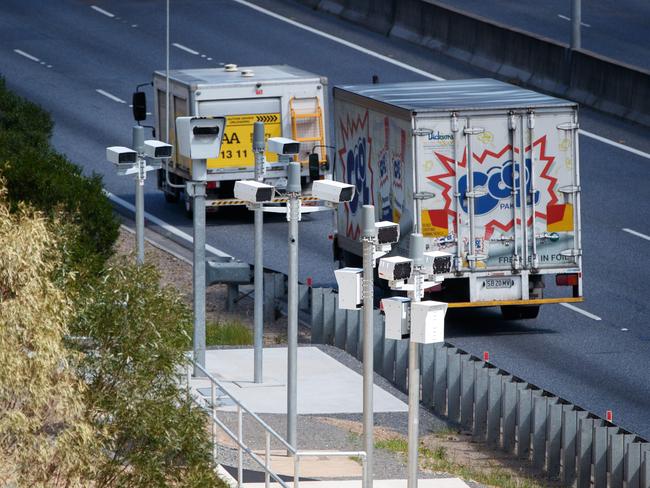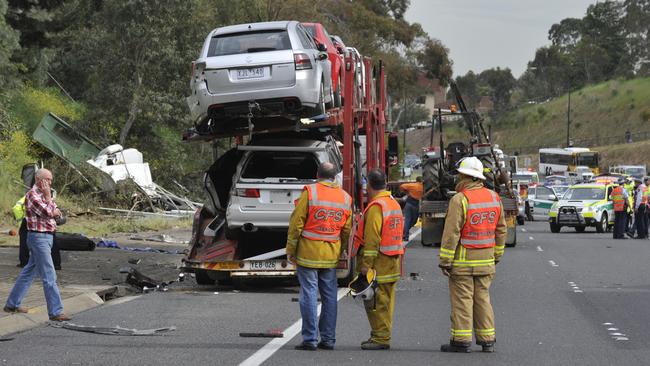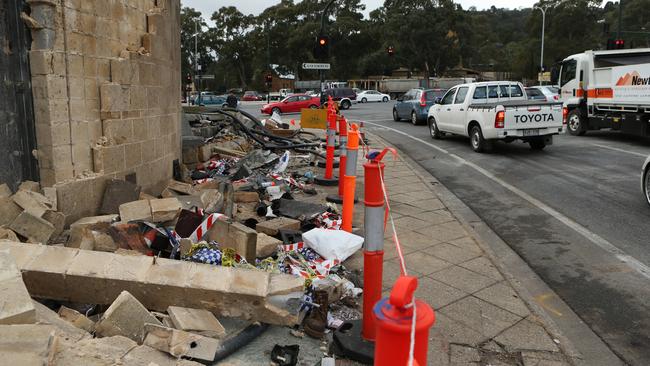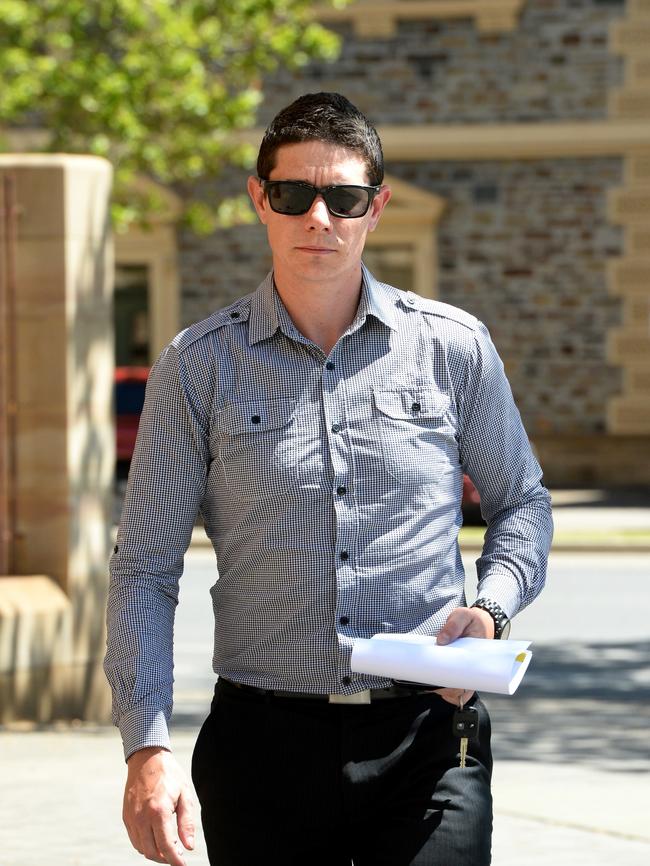Speeding trucks on South-East Freeway escaped fines because of out-of-date cameras
SPEEDING truckies on the deadly downhill stretch of the South-Eastern Freeway have escaped fines for the past four years because of an out-of-date traffic camera.
- ‘Keep traffic further back at the Tollgate to avoid tipping trucks’
- Tougher penalties for speeding truck drivers
- 6 in 10 trucks don’t meet safety standards
SPEEDING truckies on the deadly downhill stretch of the South Eastern Freeway have escaped fines for the past four years because of an out-of-date traffic camera.
Investigations by The Advertiser have revealed the maximum 60km/h speed limit on trucks, recommended by the Deputy State Corner after a series of deaths, has not been properly enforced by the camera near the Heysen Tunnels.
The camera’s technical capabilities means it has only been able to identify large trucks — those with five axles or more — flouting the downhill speed limit.
That is despite the thousands of smaller trucks that travel the route being included in the 60km/h (or lower when signposted) limit set in 2014.

The Transport Department is now working to install new cameras with numberplate recognition technology to close the loophole.
“The upgrade to the safety camera system will detect all trucks and buses, regardless of the number of axles at the lower speed limit,” the department said in a written statement.
The department is yet to reveal the cost or exact timing of the upgrade.

Numerous crashes on the notorious route — from Stirling to the historic Tollgate — have been caused by trucks starting their descent too quickly, leading to brake failure.
The new cameras have been prompted by even tougher laws, which passed Parliament last November, increasing penalties for drivers and owners but maintaining the same speed limits.
South Australian Road Transport Authority spokesman Steve Shearer said truck drivers had been aware the cameras were not detecting all vehicles.
“The problem they have, and I was told this by the former government, is that they have basically a ‘buy, use, throw away’ technology in the old cameras which cannot be upgraded to meet the new rules,’’ he said.
“Irrespective of the cameras, the industry is preparing for the changes, but I would hate for the minority to know that the changes are not being enforced.”
RAA road safety spokesman Charles Mountain said larger trucks, in general, were better maintained and obeyed speed limits because the owners and drivers had more at stake.
“(The cameras) are an important part of the overall road safety strategy to make sure people are complying with the law,’’ he said.
“Good enforcement is critical to ensure the safety of all of the road users who use that road.”
The State Government’s long-term solution to the problem of truck traffic on the freeway and in the suburbs — released during the March state election — is a freight hub at Monarto, which would divert heavy traffic away from the killer stretch of road.

OCTOBER 2010
John Posnakidis, 42, is killed when hit by a truck as he waits at a bus stop on the Freeway. In an inquest into his death ending in 2014, Deputy Coroner Wayne Schapel finds “an air of inevitability” that runaway trucks will cause “a repeat” of the incident “or worse”.
MAY 2011
New laws come into effect creating a lower posted speed limit for heavy vehicles with five or more axles and forcing them into the left lane of the freeway.
DECEMBER 2013
Speed camera on the downward slope into Adelaide switched on for the first time.
JANUARY 2014
A semi-trailer rolls over, killing its driver James William Venning, 42.
AUGUST 2014
Thomas Spiess, 56, and Jacqueline Byrne, 41 die when hit by a runaway truck travelling at 150km/h after its brakes fail on the slope. At the inquest into these deaths, Mr Schapel recommends all trucks and buses be kept to the lower posted speed limit for heavy vehicles.
SEPTEMBER 2014
The heavy vehicle speed limit applying to five axles or more is applied to all trucks and buses which weigh more than 4.5 tonnes when loaded. There is no upgrading of the camera to enforce the new limit.


JANUARY 2015
The Deputy State Coroner hands down his report making 17 recommendations, which include legislative change.
NOVEMBER 2015
Legislative reform group finds hidden complexities in implementing the recommendations without variation.
MID 2016
Proposals put forward for legislative reform indicate an upgrade to the existing safety camera technology is required to enforce the proposed tougher penalties, should they become law.
An infrastructure project is commenced to upgrade the camera system. The new technology can identify registration numberplates and through the department’s database determine all vehicles registered as “heavy”. This is the first time the cameras can enforce the lower posted speed limit for smaller trucks and buses.
NOVEMBER 2017
Law changes pass Parliament increasing penalties for heavy vehicle drivers who disobey the law.
SEPTEMBER 2018
Commissioning process for the camera continues.
EARLY 2019
Legislation is anticipated to be proclaimed (which is when the new laws will come into force).
